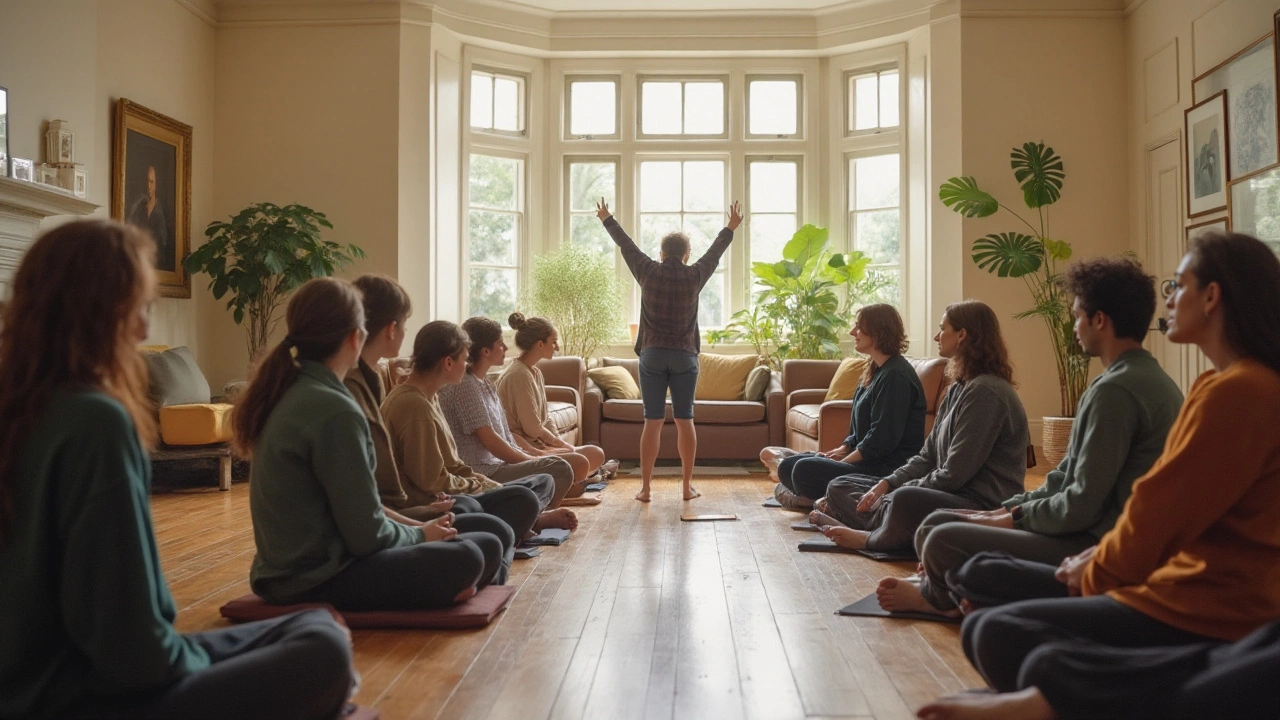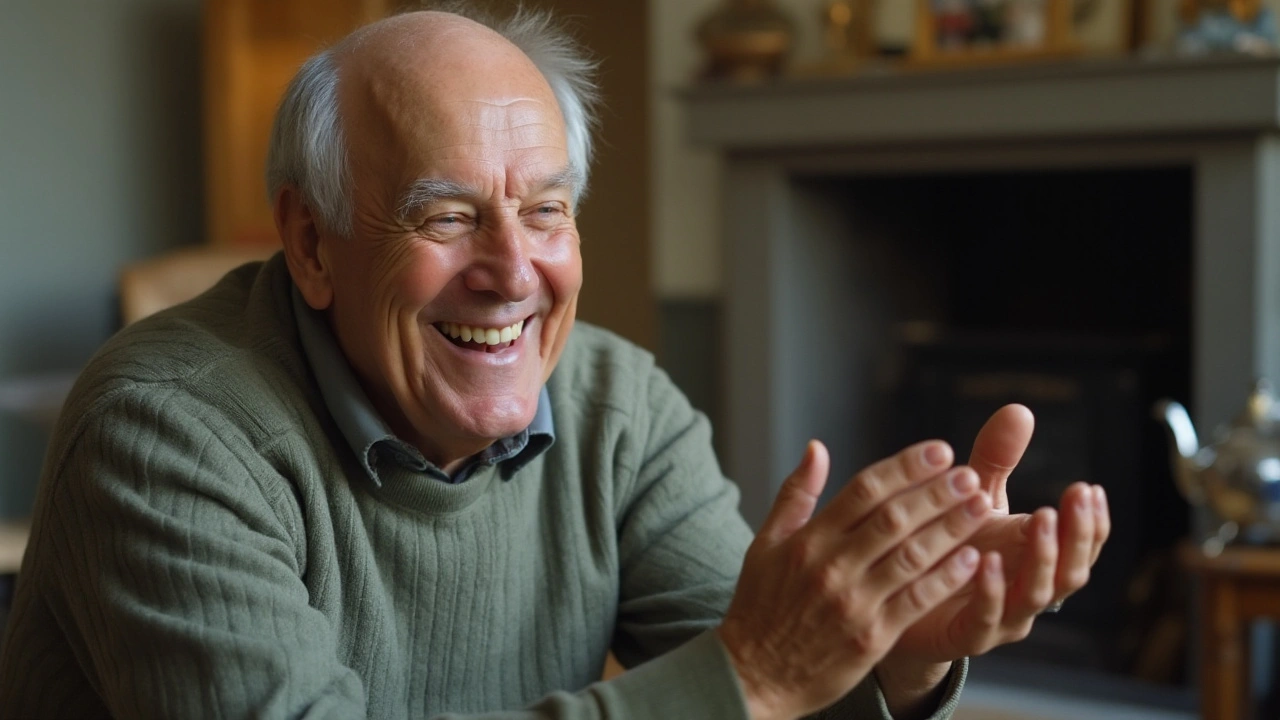
Discovering new ways to move and function is like unlocking a door to a new reality, one where aches and limitations aren't the main characters of our daily stories. Feldenkrais Training, named after its founder Moshe Feldenkrais, is a method designed to do just that—enhance the way we connect with our bodies to improve movement, posture, and function.
This training isn't just a form of exercise; it's an exploration, a journey where gentle movements help us build an awareness of our physical habits. By doing so, we not only change how we move, but also how we feel throughout our daily activities. This article will guide you through understanding what Feldenkrais Training is about, and how it can be a turning point in improving mobility.
- What is Feldenkrais Training?
- The Science Behind Feldenkrais
- Benefits of Improved Mobility
- Incorporating Feldenkrais Into Daily Life
- Tips and Personal Experiences
What is Feldenkrais Training?
Feldenkrais Training invites you to take a deep dive into the interplay between mind and body, steering clear from dogmatic fitness regimes or strenuous activities. Named after Moshe Feldenkrais, a Ukrainian-born physicist who turned to kinesiology and anatomy to overcome his own physical challenges, this method focuses on body awareness to unlock mobility trapped behind habitual movements. The essence of Feldenkrais lies in its gentle, mindful approach to movement that can be easily transformative when practiced regularly and with patience.
At the core of the Feldenkrais Method are two complementary practices: Awareness Through Movement (ATM) and Functional Integration (FI). ATM sessions are often conducted in group settings where a practitioner verbally guides participants through a series of movements designed to build consciousness and comfort in motion. These movements are typically simple, emphasizing quality and ease over quantity or effort. In contrast, FI is a one-on-one process, where personalized guidance allows for a deeper exploration of individual movement patterns and challenges, akin to a scientific exploration of one’s own body resilience.
But what makes Feldenkrais truly revolutionary is its understanding of neuroplasticity—the brain's ability to rewire and change. By shifting focus from rigid muscle training to the way we move, Feldenkrais encourages the brain to form new patterns, which can lead to improved physical function. It's an inward innovation; the practice shows that as we refine our movements, cognitive clarity, and emotional balance often follow. Feldenkrais articulated his vision by saying, 'Make the impossible possible, the possible easy, and the easy elegant.'
According to the Feldenkrais Institute of New York, 'The unique synthesis of movement and awareness in the Feldenkrais Method enables people to break free from habitual patterns, fostering a vibrant state of health and self-confidence.'
As Feldenkrais enthusiasts tackle various exercises, there’s a subtle attention to detail—small shifts, a keen awareness of every joint, muscle, and bone in motion. The activities range from finding smoother ways to sit and stand, to learning how breathing can alter posture. Interestingly, research studies have lent scientific credibility to these practices. A 2022 study published in the Journal of Physical Therapy Science observed that consistent Feldenkrais practice significantly improved balance and reduced fall risk among older adults.
Recognizing when we move efficiently and when we do not, becomes a skill through Feldenkrais Training. There’s a notion of empowerment in that realization. Participants report not only physical gains but emotional ones too, finding a calmness and a sense of agency over their bodies. What is most remarkable about Feldenkrais is how these subtle interventions can bring about profound changes without needing costly equipment or medical interventions. Instead, it rallies for a shift in mindset—towards simplicity, awareness, and grace in every motion.
The Science Behind Feldenkrais
At the heart of Feldenkrais Training is a profound understanding of human development, neurology, and motion. Developed by Dr. Moshe Feldenkrais, an engineer and physicist with a keen interest in anatomy and psychology, this method emphasizes the connection between the brain and body. The foundation of the training is grounded in neuroplasticity—the brain's ability to reorganize itself by forming new neural connections. This means our movement habits can be reshaped, leading to improved mobility and less discomfort.
The Feldenkrais Method relies on what many call "Awareness Through Movement (ATM)" and "Functional Integration (FI)." These are two integral concepts that underpin the science of this training. In ATM, participants are guided through sequences of movements that encourage exploration and subtle refinement of movement patterns. It's a way to help individuals truly understand how they move, and more importantly, how they can improve these movements for enhanced mobility. Functional Integration, on the other hand, involves one-on-one hands-on sessions where practitioners use gentle touch to guide clients and enhance their body's self-awareness.
Science explains how the intricacies of movement can be decoded by the brain. This is what makes Feldenkrais such a potent tool. By zeroing in on the details of posture, gait, and self-image, the training paves the way for new movement borders. It's fascinating to see how slight shifts in regular action sequences can lead to substantial shifts in comfort and efficiency. The impact is often quantifiable, as practitioners not only report feeling better but also demonstrate measurable improvements over time.
Researchers studying Feldenkrais have discovered that students usually show increased coordination, flexibility, and efficiency in movement, as well as significant reductions in pain. In several documented cases, involving participants with chronic pain conditions, the results were impressive. Their abilities improved consistently over a span of weeks, which were documented through improvements in physical assessments and subjective well-being surveys.
Moshe Feldenkrais once said, "What I'm after isn't flexible bodies, but flexible brains. What I'm after is to restore each person to their human dignity." These words highlight that the science behind Feldenkrais is as much about psychologically nourishing the mind as it's about improving physical conditions.
The brain's ability to adapt is why this training method is incredibly effective, especially for those who might have believed they were imprisoned by their own bodies. By engaging with the teachings of Feldenkrais, we can encourage our brains to process movement more effectively and adopt new pathways that lead to pain-free, graceful mobility. It plays a subtle internal concerto that harmonizes our cognitive and physical selves, offering us new abilities and enhanced quality of life.

Benefits of Improved Mobility
Improved mobility isn't just about moving better; it can be a transformative experience for both the body and mind. The rewards of engaging in practices like Feldenkrais are manifold, transcending simple physical benefits to touch various facets of life. When you begin to move with ease and confidence, it ripples through to your emotional health, too. The sensation of freedom in movement can be cathartic, offering a mental lightness that uplifts spirits and encourages positivity throughout daily living. One begins to notice a newfound poise, a grace that was perhaps buried under years of tension and habitual patterns. There can be a delightful surprise in discovering that something as simple as paying attention to how you move can lead to profound changes.
“Movement is life; it progresses through development, not departure from movement nor mere repetition.” - Moshe Feldenkrais
Physical health sees significant gains with enhanced mobility. Joints that were once stiff start to articulate more fluidly, while muscles find a harmonious balance between strength and flexibility. With consistent practice, the body learns to work efficiently, minimizing wear and tear, and therefore reducing the risk of injury. Imagine climbing stairs without pain, bending down to pick up a grandchild without a second thought, or dancing with abandon at a family event—these are the gifts of improved movement. The circulation of blood improves, nourishing body tissues, and supporting the body's healing processes. As one becomes more active and agile, it fosters an independence that may have been thought lost to age or injury, offering a boost in self-esteem and confidence.
From a practical standpoint, increased mobility offers tangible benefits. Everyday tasks become more manageable and less taxing—chores become less burdensome, and work-related activities require less effort. For athletes or those involved in physically demanding tasks, this means the potential for enhanced performance and endurance. There's a beauty in achieving personal bests or simply knowing that your body is capable and responsive. Feldenkrais Training aids in building this comfort, a type of body wisdom that subtly transforms every movement into an experience of mindfulness. This heightened awareness doesn't just stay with you during practice; it extends to all parts of life, nurturing a state of constant learning and adaptation.
Incorporating Feldenkrais Into Daily Life
Integrating Feldenkrais into daily life doesn't require rigorous scheduling or intensive sessions. Instead, it invites a shift in perspective – a commitment to mindfulness and self-awareness throughout the day. This approach can start with something as simple as paying attention to how you get out of bed in the morning. As you wake up, take a moment to notice the sensations in your body; are there areas of tension or ease? This initial act of tuning into your body sets the tone for the rest of the day, helping you cultivate a deeper connection with your movements. Over time, you'll discover that these small moments of awareness contribute significantly to improved mobility.
One way to practice Feldenkrais daily is through what practitioners call Awareness Through Movement (ATM) lessons. These guided sequences encourage exploration of different movement patterns and are often available as recordings or live sessions. You don't need much space – just a comfortable spot, like a mat on the floor or even your bed. Each session aims to guide you through gentle movements that bring attention to how your body moves and functions. With regular practice, you may notice a reduction in unnecessary muscle tension and the development of more efficient movement patterns. Feldenkrais, as a practice, reinforces the idea that small, conscious adjustments can lead to lasting body awareness and flexibility.
Another potent way to incorporate Feldenkrais into everyday practices is through Functional Integration sessions. In these personalized, hands-on lessons, a practitioner helps you understand your movement habits and offers alternative ways to perform basic actions. By physically guiding you, they provide direct feedback that can be powerful in changing your movement patterns. Even though these sessions are often conducted with trained professionals, the learnings can be applied independently. Consider the simple act of walking; a Feldenkrais session might reveal subtle shifts in weight or gait that can make walking more comfortable and less strenuous over time.
To make Feldenkrais an organic part of your routine, consider embedding its principles into common activities. When brushing your teeth, for instance, notice your posture. Do you lean too much on one leg? During meetings or while working at a desk, pay attention to your sitting alignment. Is there tension in your shoulders or neck? These moments offer a chance to apply Feldenkrais principles by releasing tension and discovering a more balanced way to sit or stand. By making these daily gestures mindful, you not only reinforce Feldenkrais techniques but also improve everyday comfort and mobility.
Dr. Moshe Feldenkrais once remarked, "If you know what you are doing, you can do what you want." This embodies the essence of incorporating Feldenkrais into life: it's about gaining clarity in movement, which empowers you to engage more freely with the world. Practicing Feldenkrais allows you to make minute adjustments to your everyday actions, leading to enhanced efficiency and reduced strain. By embedding these principles into your daily routine, you pave the way for long-term transformation. As you delve deeper into this practice, you'll likely discover changes not only in physical health but also in mental clarity and emotional resilience.

Tips and Personal Experiences
The journey into Feldenkrais Training can be as rewarding as it is transformative. For many people, the first step is often the hardest, entangled in self-doubt and insecurity about trying something new. Yet, embracing the unknown can lead to significant personal discoveries. The essence of Feldenkrais lies in cultivating awareness and experimenting gently with one's own body. Instead of diving right into the exercises, take a moment to observe your daily habits. How do you sit, walk, or even stand while waiting in line? These small observations can provide insight into patterns that might be limiting your mobility.
A useful tip when starting Feldenkrais is to prioritize quality over quantity. This is not a race but a personal exploration. According to practitioners, even a few minutes a day can bring noticeable enhancements in body awareness. Practicing with patience and curiosity rather than rushing through can make all the difference. Having a consistent time slot dedicated to your practice can also help embed new movements into your lifestyle. Whether it's morning or evening, pick a time when you're least likely to be interrupted, and make it a routine.
It's not uncommon to hear stories of people experiencing "lightbulb moments" during Feldenkrais sessions. These are instances when someone suddenly unlocks a new way of moving, realizing that a previously restricted area can open up. Such revelations often occur with small tweaks, like changing the angle of an arm lift or shifting weight slightly differently. Jenya Goldin, a seasoned Feldenkrais trainer, once remarked,
"The beauty of this practice is that it teaches you to listen to your body and respond with compassion."
For those just starting, seeking guidance from experienced practitioners through classes or workshops can be invaluable. Many report feeling invigorated after learning in a group setting, where shared experiences and tips can inspire personal breakthroughs. While self-practice is core to Feldenkrais, community support often enhances the experience, offering different perspectives and insights.
Another tip for getting the most out of Feldenkrais is to maintain a journal of your progress. Record what activities feel easier or any improvements noticed in daily tasks, like walking or bending. Over time, these records can highlight significant changes and motivate continued practice. Additionally, keep an eye out for training resources such as online videos or books to deepen your understanding of the principles involved.
Personal Stories and Experiences
Sharing personal experiences can be a powerful way to connect with this practice. Take the story of Tom, who had suffered from chronic back pain for years. After multiple attempts at various therapies, he discovered Feldenkrais almost by accident. "It was like finding the missing piece in a puzzle," Tom recounts. Through guided classes, he learned to move with less effort and more awareness, reducing his discomfort significantly. His newfound mobility also reignited his passion for hiking, a hobby he previously thought he'd lost forever.
Sally, another practitioner, shares how Feldenkrais helped her recover post-surgery. She emphasized how tuning into even the smallest movements made a substantial impact on her recovery process. Body awareness became her toolkit, enabling her to manage pain and rebuild strength with less wear and tear on her body. Sally believes that Feldenkrais doesn't just change how you move but alters your perception, like seeing everything through a clearer lens. Such personal stories underline how this gentle yet profound approach lays the groundwork for healthier and more mindful living.
Engaging with Feldenkrais Training means opening the door to lifelong learning and understanding about oneself. The simple act of paying attention to movements can unfold layers of complexity in how we relate to our own bodies. Whether for pain management, enhanced athletic performance, or general well-being, the benefits of this practice often ripple through all areas of life.